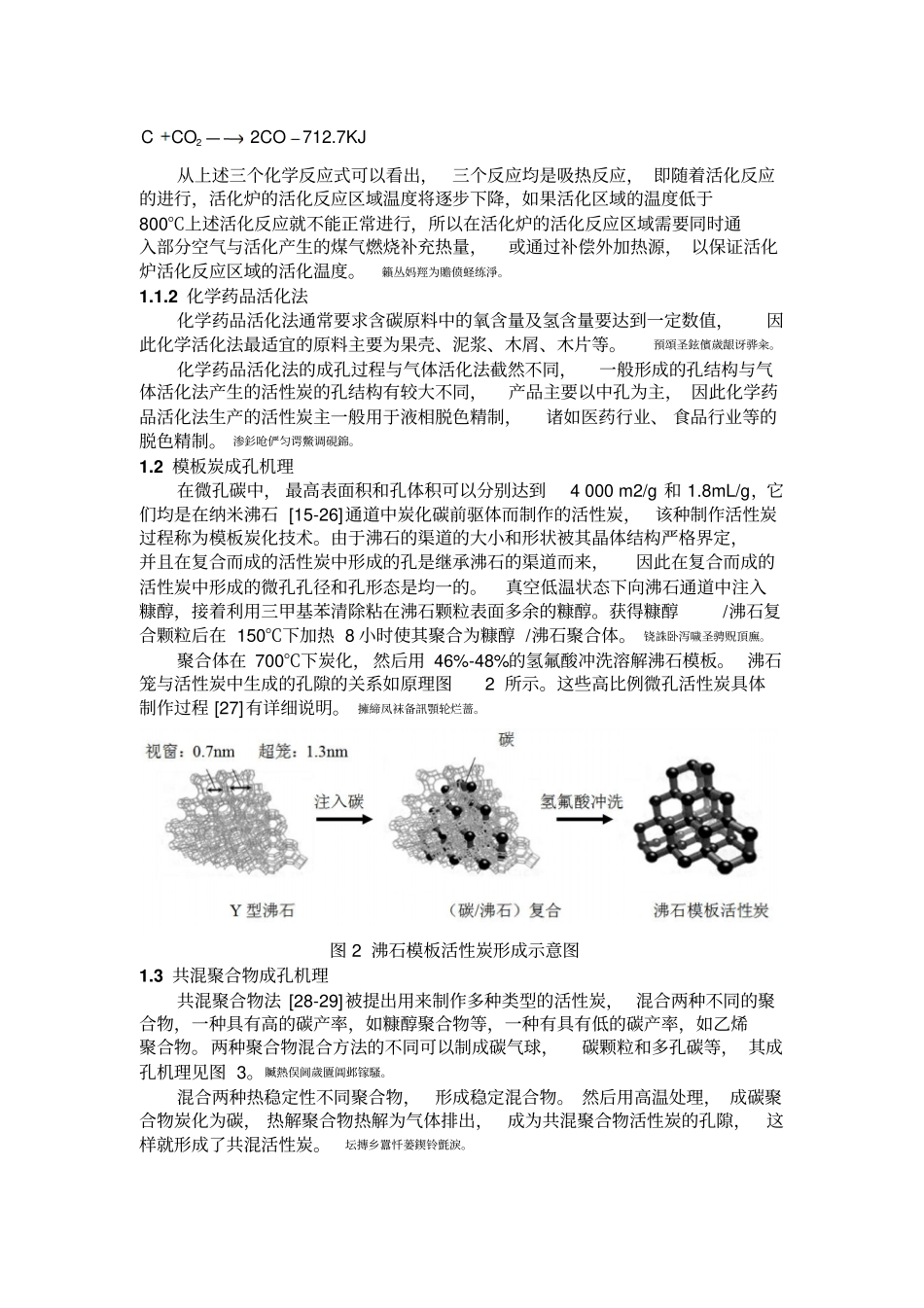碳材料孔控制研究进展简要说明炭材料孔的形成、 分类和描述, 之后评述了控制碳材料孔结构技术的的重要性。评述了四种碳材料成孔机理和多种孔描述技术的优略,然后从 VOC处理及回收利用、水净化、汽车尾气处理、CO2 的可逆不可逆吸附和电极材料5个方面来说明在碳材料中孔结构控制的重要性。最后介绍了孔结构控制技术, 包括大孔控制、中孔控制、微孔控制。Abstract: Techniques for controlling the pore structure and its importance in carbon materials are reviewed after a brief explanation on formation mechanism and classification and characterization of pores. The understanding of four kinds of pore-forming processes are reviewed and then five application areas are presented to show the importance of pore structure control in carbon materials, which included VOC treatment and recycling,Water purification,gasoline vapor adsorption, CO2 capture, and carbon electrodes for electric double layer capacitors. Pore structure control techniques are shown, including the macroporous control, mesoporous control and micropore control.矚慫润厲钐瘗睞枥庑赖。活性炭是一种具有丰富内部孔隙结构、高空隙率和较高比表面积的六方晶格型碳。因活性炭性价比高、化学稳定性好[1] 、吸附性能优良、热稳定性好及便于再生利用和相当的硬度等优点而成为吸附技术中首选的吸附剂材料。活性炭广泛应用于食品、医药、电池、催化、电能储存、黄金提取和多成份有机气体分离[2] 等,。对环境安全和污染控制关注的提高为活性炭吸附的应用开辟了新的领域,在很多化工厂,如印刷,涂料,纺织印染,聚合物加工等。活性炭孔隙分布规律性差, 活性炭工业制作无法实现控制孔径大小及分布,当今科学、 工程和技术一个特殊的应用需要一个特殊的孔结构[3–6],有文献报道,当孔隙大小为吸附分子的 2~4 倍时最有利于吸附,可以根据吸附质分子选择吸附性能最好的活性炭,但一般活性炭的孔径并不均一,选择性吸附效果差。因此,精确控制活性炭的孔结构在不同应用领域有很强的需求。常规活性炭主要包含小孔, 小孔也被IUPAC 定义为微孔,即使他们只有纳米级尺寸(小于2nm),也已经吸引了注意和努力在孔尺寸和数量的控制...


